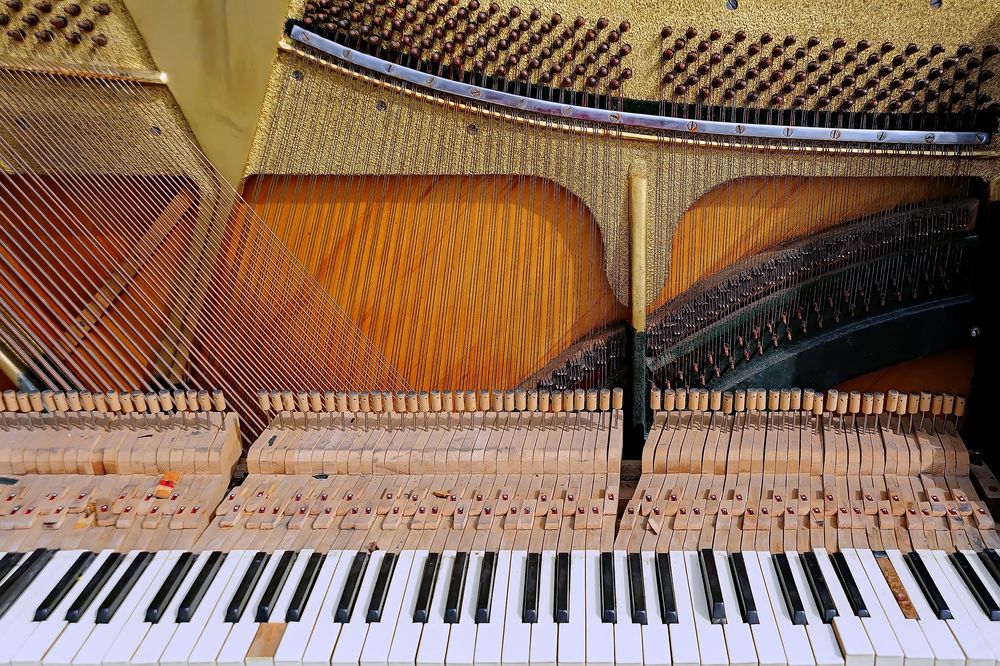6. Maintenance - Care - Restoration
Maintenance Intervals
You should care for you piano in the same way that you would care for your expensive car. What this means is that maintenance and repair should be left to a professional.
The question is: What do I have to do when?
You probably know when the next inspection on your car is due and you may even know what work will be involved when it is done. But what about with an instrument? An upright or grand piano has enough complicated mechanics and moving parts that can wear out, that they also require regular maintenance to work well.
Of course, as with a car, it depends on how often you use it. Whether it is more like a piece of furniture or whether you practice a lot (several hours daily) will determine how often it needs maintenance. The more use it gets, the faster parts will wear out.
Here is a recommended maintenance plan on an instrument that gets an average amount of use (play five times a week, at least 20 minutes a day):
- Get the tune/tone checked: at least once a year (twice is better). The pitch should be checked much more regularly, this is to prevent the tuning being based on different frequencies when it is done.
- Adjustment and intonation should be done at the same time as the tuning.
- Sanding the hammer heads should be done every 5 years or so.
- Get new hammer heads every 10-15 years depending on how often you play.
- Get the keys re-topped every 20 years or so.
- A general overhaul should be done once a generation during the life of your instrument (40-60 years).
Of course the maintenance plan can vary depending on the style of play. A piano technician will be happy to advise you.
Care Instructions
There is also simple daily or weekly care work that you can do yourself:
- You can clean the surfaces with a duster and an antistatic brush.
- Fingerprints on painted surfaces can be removed with a moistened soft cloth and a little mild detergent.
- You may be able to polish off slight scratches by yourself.
- Please have all other work done by a specialist (cleaning the inside, etc.)
Used Pianos - When is a restoration worth it?
If you're one of those people who's been given ''a good one'' or if you've happened upon an "antique" in farmer Fred's attic and are about to offer him a price, you're faced with the question of what it's worth and if it's worth restoring.
Unfortunately the formula 'old=antique=valuable' doesn't work in this situation. Since after a certain age a piano (regardless of the type) won't even meet the minimum requirements for playability. And if it hasn't been consistently maintained, as is often the case with attic instruments, this is likely the case.
A pretty exterior with a nice veneer and good inlays does nothing for the internal workings of the instruments. Therefore it pays to seek the advice of an expert before restoring in these situations. And to help you in dealing with them here are a few questions you'll want to ask:
- Is there a crack in the soundboard or bridge?
- This is a very complicated repair and can quickly put you over budget.
- Are the tuning pegs/pins of the strings still firmly seated in the sound post?
- If they are loose it may be impossible to tune the instrument.
- Do the strings need to be changed due to oxidation and/or aging?
- Again, this may no be worth the effort/cost.
- What is the overall condition of the mechanics?
- This applies above all to hammers, damper felts, axles and keyboard felts.
Ultimately the line between cost and value should be held. Unfortunately this means that many pianos are hardly worth restoring and you you should look at buying new where possible.
For a grand piano it is harder to say, as even if a repair costs €10.000 or more, the instrument may be worth € 30.000 or more once restored.

A view into the interior of a piano (mechanics and tuning pegs)



